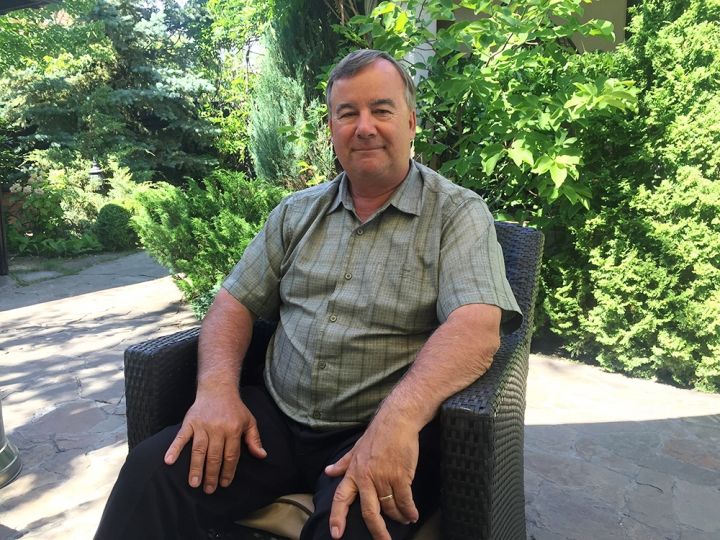To learn more about agribusiness in Ukraine, follow us on Facebook, on our channel in Telegram, and subscribe to our newsletter.
Martin Vanderloo: the Best Canadian Soybean Genetics for Ukraine via E-Mail
It's been several years since Martin Vanderloo, the founder and President of the Canadian company Huron Commodities, received an email from the Ukrainians. It was sent by the owners of the Agriсultural Technological Company (ATC). The gentlemen, as Martin calls them, were restless: they were looking for a suitable variety of soybeans for the fertile Ukrainian soils. "They were sure that Ontario and Ukraine were in the same climate zone, the same weather conditions for crops cultivation, in particular soy," recalls Martin.
Mr. Vanderloo admitted in the interview to the Canadian media: "I was criticized for sharing genetics with Ukraine... but the guys paid huge checks to the University of Guelph for the breeding, which has not been used in Canada for a long time." The Canadian's opinion of Ukrainian agriculture changed more and more with each visit: he was amazed by the soils, spaces, markets and prospects!
During the visit to Dmitry Motuzko, Latifundist.com managed to meet Martin Vanderloo personally and ask him about how much it costs to develop a new variety for Ukraine in Ontario, why the world appetite for non-GM soybeans is getting bigger every day and how to calculate the amount of protein in soybeans instead of tons per hectare.
Latifundist.com: Martin, when did you visit Ukraine for the first time? And what kind of email did you receive from your Ukrainian colleagues?
Martin Vanderloo: It's a strange, but interesting story (Ed. — smiles). A few years ago I received an email. The gentlemen assumed that Western Ontario, the part of Canada where I was born, is located on the same latitude as Ukraine. In their opinion, the countries are similar in terms of climatic and weather conditions and, accordingly, the conditions for cultivating agricultural crops.
Latifundist.com: Judging by the fact that you are here, were the gentlemen right?
Martin Vanderloo: Yes, their thinking was correct and in the right direction, "spinning the globe". The climate is indeed very similar in Ukraine and in South-West Ontario. And this means that the soybean varieties which are popular in Ontario, are doing very well in Ukraine. So we started negotiations, but the cooperation was much deeper than simply supplying seeds to Ukraine. Our new partners insisted on gaining access to Canadian soybean genetics for the long term. We liked such approach.
As a result, I founded the company CanGrow Genetics in Canada and started sending them the first varieties for testing. Our genetics was doing very well in Ukraine. They were interested in both early- and slow-maturing varieties. After all, their lands in Ukraine are located from Zhytomyr and Kiev to Odessa. Ukraine is ideal for growing soybeans, because there is a very wide area for growing mid-season varieties. In general, I am sure that these soils are perfectly suitable for soybean cultivation! And the soybeans are perfectly suitable to decorate your beautiful soils.
Latifundist.com: What steps did you take next?
Martin Vanderloo: Next, I invited the gentlemen to Canada. At that time, I was working very closely with Guelph University, which is engaged in soybean breeding for Canada and North America. The approaches to the selection of this crop in Canada and in the US are different. For example, in the United States, the same seed companies that dominate the market as seed suppliers, are also engaged in seed breeding, among them are Monsanto, Pioneer, Syngenta, etc. But they all study and promote GM-soy varieties. And they do not really care about promoting non-transgenic varieties.

Latifundist.com: What is your company Huron Commodities like today?
Martin Vanderloo: Today we produce about 4 thousand tons of soybeans per year, which does not sound like much. But one ton of seeds will plant 10 hectares, which is not so little. We represent 20 different varieties. The most suitable ones for Ukraine are: Strive, Prescott, Brooke, Prudence, Avatar and others.
Latifundist.com: Tell us about your work with universities and Ukrainian companies, who are the end-consumers of the seeds of your breeding. Roughly speaking, how much does it cost to produce a new variety in a Canadian university?
Martin Vanderloo: When our company signs an agreement with the university, we thereby obtain exclusive rights to any new variety created by its scientists, provided that we pay royalties for the university. This is the only possible type of earnings for university researchers.
The scheme of cooperation with ATC and other companies is as follows: we develop and supply seeds for the agricultural holding. At the same time, the Ukrainian company must make sure that royalty is paid for each variety so that the University can continue its work on the development of new varieties. It takes from a year to 10 years to develop a new variety. The cost of the scientific breeders` services is at least $10 thousand per year for 10 years. And then, after 10 years, if the variety is not more remarkable and no better than its predecessors, it is simply thrown into garbage. Nobody will buy it. On average, breeders manage to breed 2 varieties per year, making 200 crosses.The development of a new variety is very expensive. At the same time, there is no guarantee of results.
Latifundist.com: In which countries do you supply your varieties besides Ukraine? And what is the strategic development plan for Huron Commodities?
Martin Vanderloo: The varieties developed here are shipped to Japan, Southeast Asia and Europe. But, when Dmitry and Yuri came to get acquainted with the University breeder, our discussion grew into the idea of creating even more high-protein and high-yielding varieties for Ukraine. And since the breeder, who was responsible for this, was born and raised in Serbia and his soul belongs to those regions, he was hugely enthralled.
Latifundist.com: Probably, not every day there come agrarians from Ukraine to order a new selection of non-GM soybeans for their country ...
Martin Vanderloo: In fact, 20% of Canadians are Ukrainians (Ed. — laughs). My wife's great-great-grandmother and great-great-grandfather are from Ukraine. In any case, we are delighted with the opportunities offered by Ukrainian soils and the Ukrainian market. After all, the development of scientific universities concerns not only soybean seeds, but also products obtained by their processing.
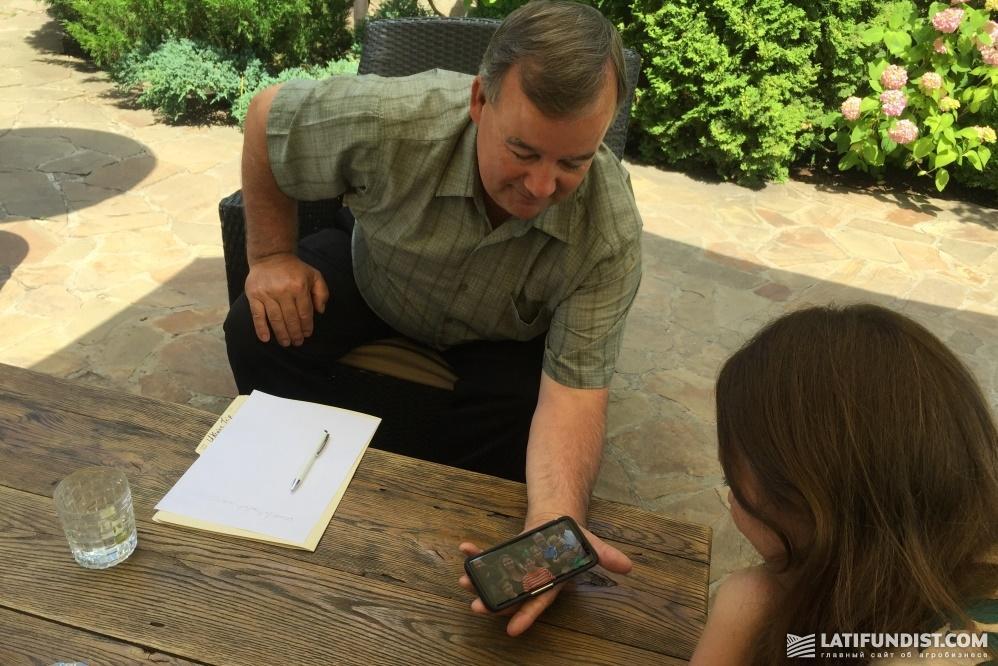
Latifundist.com: What processing products do you have in mind?
Martin Vanderloo: We are developing new products from soybeans: for both feed and livestock, and for the food industry. For example, I will tell you about one of the projects that we are currently working on. One researcher invented a soybean oil product that absorbs heat and keeps the temperature, say, in a thermos with hot coffee, at a stable level of 62 °C for 4 hours. At the same time, when the soybean oil is placed in a coffee thermos or an insulated cup, the temperature of the boiling water poured into this thermos or cup is reduced to the desired 62 °C for only 10 seconds. At a first glance this is not a discovery at all, is it?
But this chemical reaction could be used in the walls of your house, for instance: when the sun shines in the daytime, the walls absorb heat, and then at night, when it gets colder, the walls will release it. Soybean oil can also be used in the production of engine oil, paints, candles, packages (which will replace plastic), for the dairy industry, etc. The demand for soybean oil in the world increases daily.
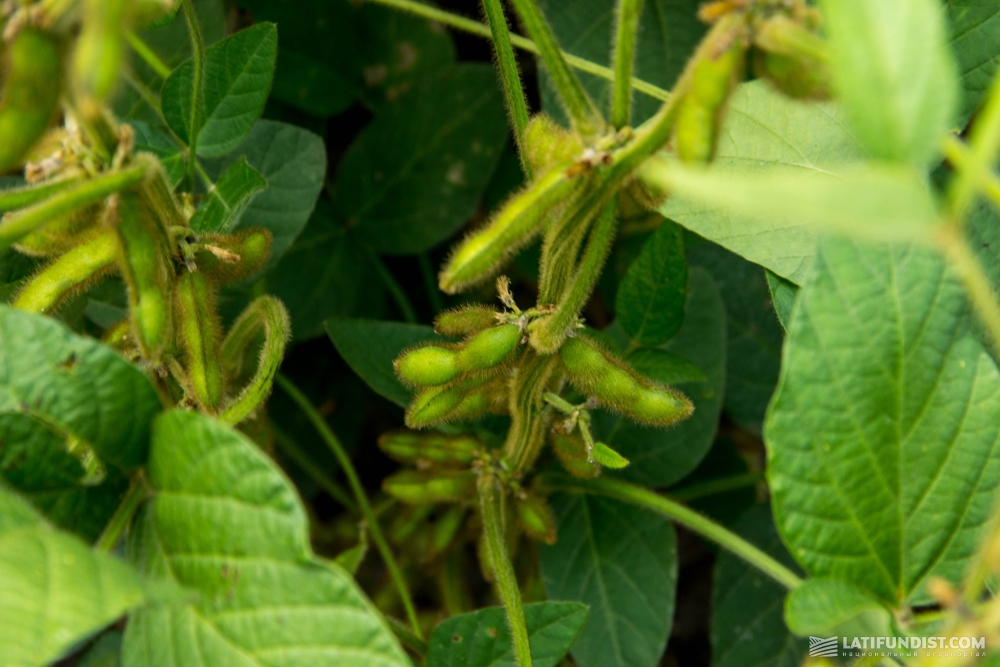
Latifundist.com: That`s very interesting! But let`s return to the topic of seed selection. Why are Canadian soybeans considered advanced in terms of genetics, and how has your country learned to grow this crop?
Martin Vanderloo: In Canada we grow soybeans on the total of about 2.4 million hectares. At the same time the US grows it on the area of 36.4 million hectares. It is a tangible difference, isn't it? In the US, soybean is predominantly an export crop, as well as a product of processing for oil or feed. Therefore, Canada is focusing more and more on the production of non-GM soy for the food industry of Europe, Japan, and South-East Asia. We are also developing new varieties for the food market as opposed to the US industrial market. These are the varieties that are very good for making soy milk, tofu or soybean paste.
Latifundist.com: How much GM soybean does Canada grow compared to the US market?
Martin Vanderloo: In the USA, out of 36.4 million hectares of soybean, 95% is GM soy. In Canada, out of 2.4 million hectares of soy, its share makes 25% because we are focused on niche markets.
Latifundist.com: How was this strategy of focusing non-GM soybeans developed in Canada?
Martin Vanderloo: It started in mid-90s, when Monsanto introduced GM products to the market. It would be difficult for Canada to compete with the US market in this aspect. Besides, Japan and Europe insisted that edible soybeans should not be transgenic. The market was open, and the pricing policy was favourable.
Latifundist.com: It seems to us that Ukraine is following Canada in its footsteps in this respect, as recently many farms have taken on organic farming and growing organic non-GM products.
Martin Vanderloo: That's right. And, more than that, I'm sure that this influence came from Canada.
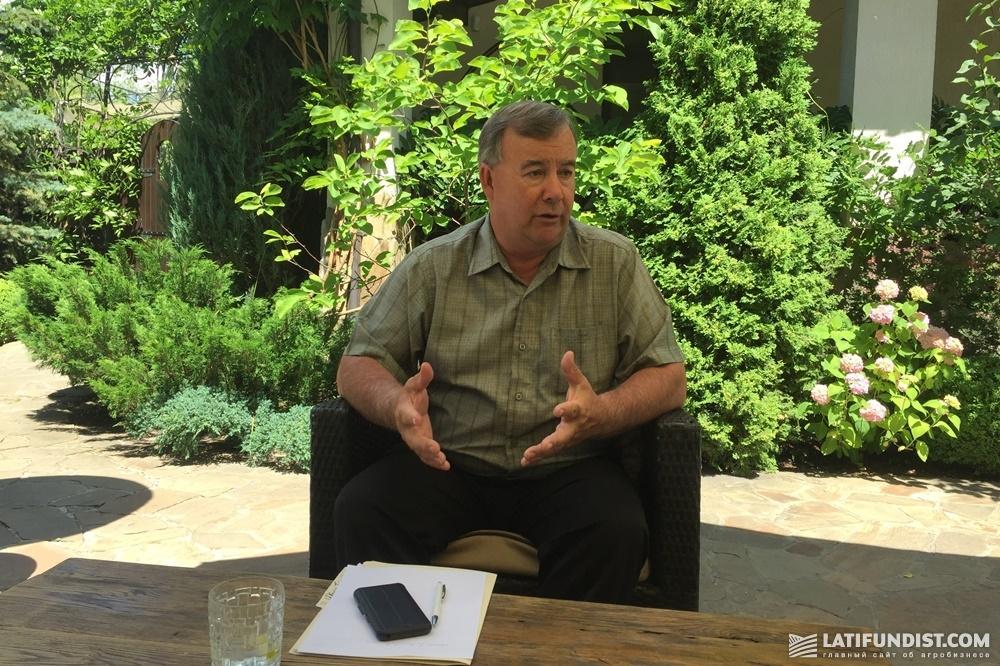
Latifundist.com: What is the history of your company?
Martin Vanderloo: I used to work in large companies, first with the Michigan Commodities traders, then I was working in a large farm cooperative for a number of years. With the foundation of the company Huron Commodities, I immediately realized that we would not be able to compete with Cargill, ADM and other "monsters" of the market, hence we got the understanding of the importance of small niche markets with great financial potential. Of course, we can grow only non-GM products. And every agrarian who chooses this path must be very careful not to contaminate his seeder, combine harvester, trucks and other equipment. We pay farmers an additional premium for this.
Latifundist.com: What is the size of this extra-premium?
Martin Vanderloo: It depends on the cultivated variety. You understand that a variety with a high protein potential usually has lower yield. For example, the buyer from Japan, who is a tofu producer, says: "I want soy with the highest protein level."
In this case, the farmer will suffer losses in yield, so the premium should be much higher.
Latifundist.com: What level of soybean protein does Japan require?
Martin Vanderloo: Tofu producers from need 44 to 46% protein, and Europe requires 40%. It turns out that a 40% protein variety will have higher yield. The low-protein soy yields more tons per hectare. Thus, our premium is adjusted based on the average yield for this variety.
Latifundist.com: Very few people in Ukraine calculate quantity of protein per hectare instead of tons per hectare ...
Martin Vanderloo: Canadian farmers have the same approach. We sit down with many of them, take a calculator and ask: is it important how many tons per hectare there will be or how much net profit it will bring to you after harvesting? We teach them to consider the potential of soy as a crop.
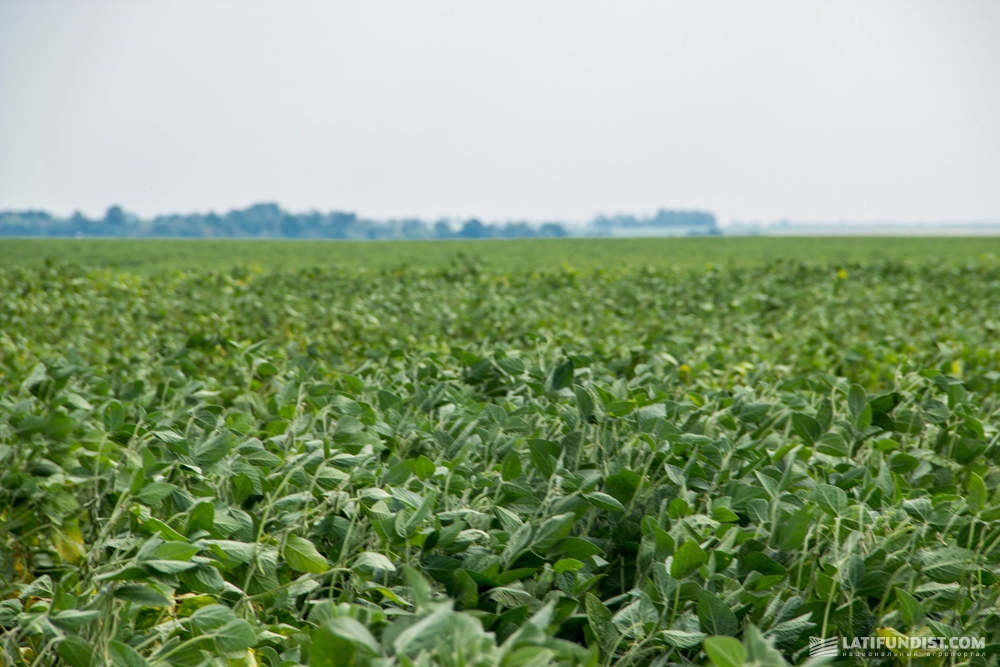
Latifundist.com: How do you assess GM technologies in the global perspective?
Martin Vanderloo: I do not have a univocal view on this issue, and here is why. From a scientific point of view, no research has yet proved that GM products are bad. It's just a negative perception formed during a dozen of years.
At the same time the GM-plots allowed to increase the yield and reduce the costs of growing a number of crops, which helped to fulfil the task of feeding the world. We must not forget that the world's population will grow to 9 billion by 2050. How can we solve the already existing problem of hunger in the world?
The only thing I listen to is that my consumer wants the soybeans not to be GMOs. For me this is enough to do a good job. But our niche is not for such global companies as Syngenta and Monsanto. They simply can not afford these kinds of projects. This is a niche for small companies.
Latifundist.com: In your opinion, will this trend continue or will the world increasingly switch to non-GM products?
Martin Vanderloo: Already, we are seeing that 34 million people in China are moving up to the middle class every year. Their first priority is better quality food, their appetite is constantly growing. Over the past few years, we began to supply non-GM soybean products to China. While a few years ago the purchasing price for GM and non-GM soy was the same, now, with the general increase in prices for non-GM and ECO products, the requirements for such products are also growing. But these requirements are worth fulfilling, since the Chinese do not trust their own food network.
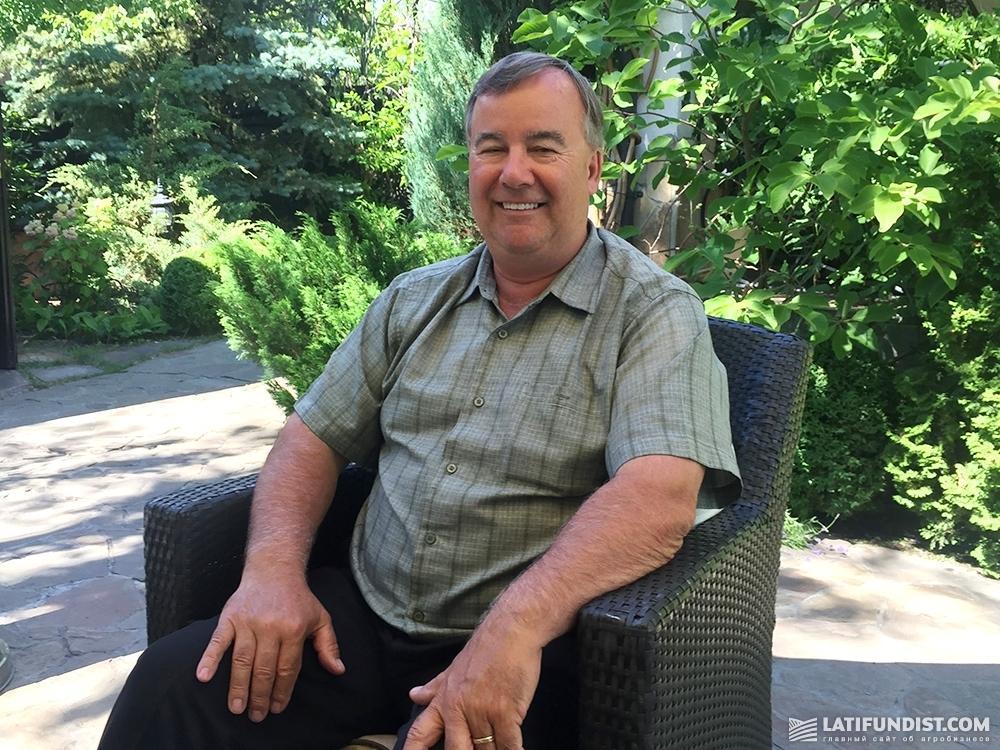
Latifundist.com: How do you think this market will change in the future, and what will the consumer expect from the agricultural producer?
Martin Vanderloo: I think that Canadian farmers have done a very poor job explaining to the consumer where their food comes from and what its quality is. As I see it, the real opportunity for the agri-industrial complex is to explain to the consumer how the food is produced, that we are not the same farmers in overalls and straw hats, people remember from their childhood. As soon as the consumer realises who produces his food, and how it is produced, he will immediately think about its quality.
Latifundist.com: Thank you for the very interesting conversation!
Daryna Kozoriz, Latifundist.com

